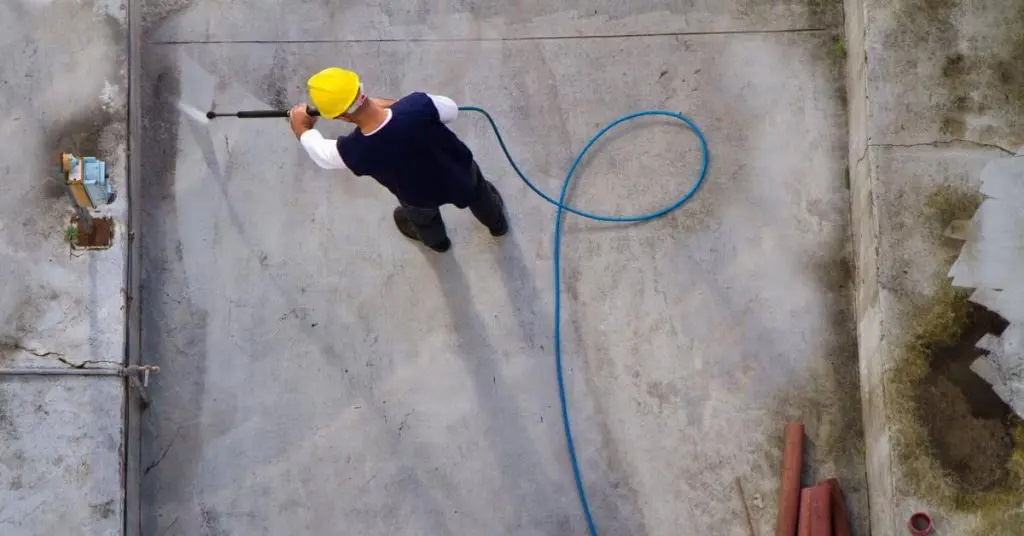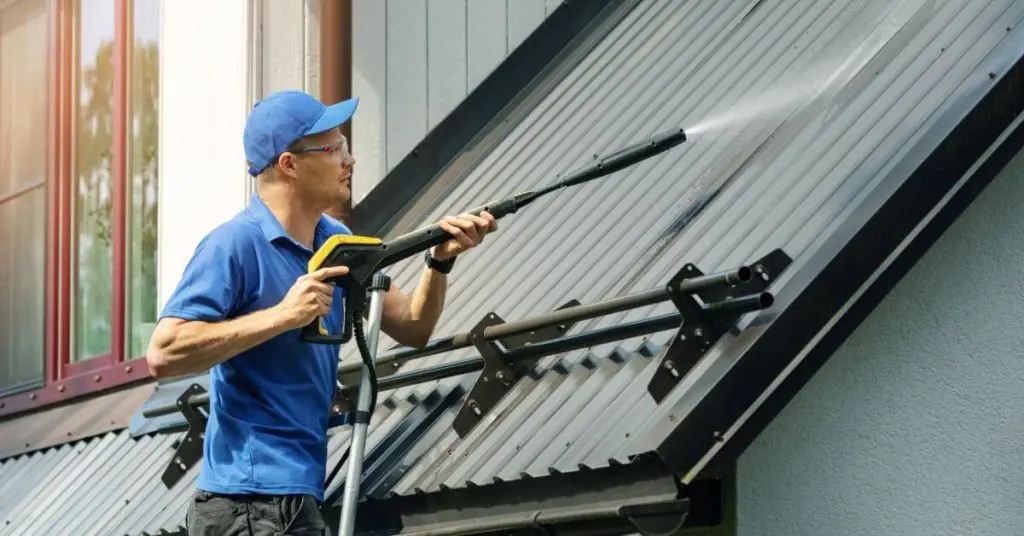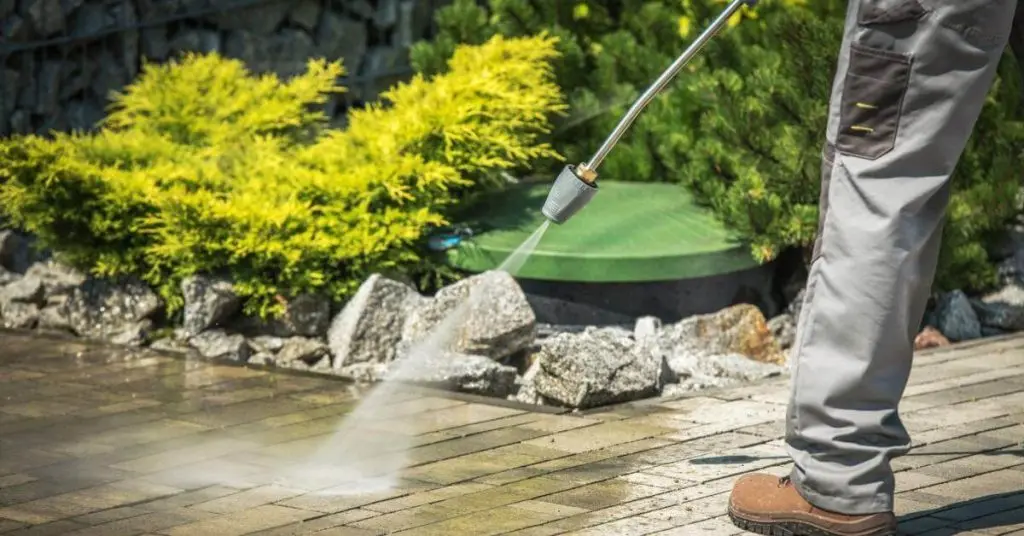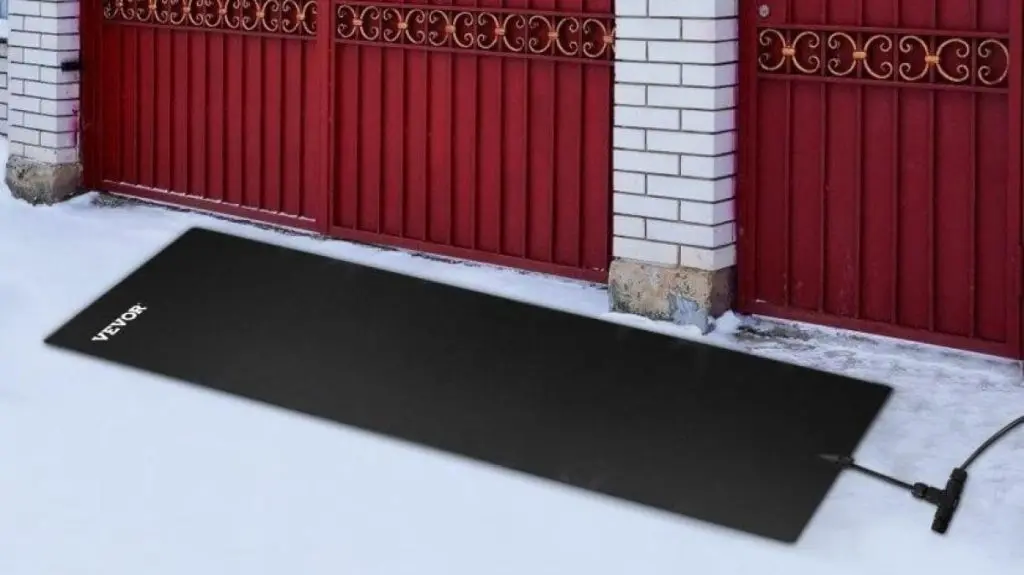A pressure washer is a fantastic tool to have around the home. A pressure washer is designed to produce a high-pressure stream of water. That stream of water is able to clean many different surfaces.
All sorts of stuck-on dirt, grime, salt, oil stains, and more can be removed with these great devices. With that being said, pressure washers aren’t all perfect. Pressure washers may experience problems at times.
If your pressure washer has no pressure, there are a number of possible problems. That’s exactly what we’re here to address today. If your pressure washer has no pressure, it could be due to a number of reasons. We’re here to explore what all of these reasons are, as well as the possible solutions.
Table of contents
Reasons Why Your Pressure Washer Has No Pressure + Solutions
There are seven main reasons why your pressure washer has no pressure. Let’s take a closer look at each reason, and what the possible solutions are.
1. Issues with the Water Supply
First, there may be issues with the water supply. It may be that there is not enough water pressure in the water supply. To fix this issue, check your water supply. Your water supply should have a pressure of at least 20 PSI.
This can be measured with a water pressure gauge. If the water pressure from your source is too low, you’ll likely need a plumber to fix the issue.
It may be the case that the water inlet filter is blocked or clogged. A clogged filter leads to low pressure. If this is the case, remove the inlet filter and clean it. Remove old debris. If the filter is damaged, you’ll need to replace it.
It may also be the case that the hose you are using to connect from your water supply to the pressure washer is kinked or damaged. Check the hose to see if there is any damage or obstructions, and fix it as needed.
2. Pump Problems
Next, if you don’t have enough pressure in your pressure washer, it could be due to a pump issue. More often than not, a faulty pump is the cause of this problem.
One of the causes of pump problems is if there is air in the pump. If there’s air in the pump, it can’t build up any pressure. To fix this problem, you need to bleed the pump. To bleed the pump, turn the pressure washer on with the trigger gun open but no nozzle. If the problem is fixed, you should see a steady supply of water coming out.
It may also be the case that the pump seals or valves are worn down. This leads to pressure loss. Inspect all of the seals and valves to see what kind of condition they are in. If they require replacement, do so immediately. Pump problems may also occur if there are air bubbles in your water supply. The only real solution here is to make sure that the water supply you are using is adequate.
3. Problems with the Pressure Nozzle

Next, issues with the pressure nozzle may also cause pressure loss. If you have a damaged or clogged nozzle, then you won’t have as much pressure as you need.
First, a nozzle may be just clogged with dirt and debris. If this is the case, then the solution is simple. Just use a small piece of wire or anything else that’s thin enough to fit in the nozzle, and clean it out.
However, it may also be the case that your nozzle is damaged. If the nozzle is damaged or worn out, it needs to be replaced. These are the types of things that really can’t be repaired. A replacement is usually going to be your only option.
4. Connection Issues
Another reason why you might be experiencing pressure issues is due to a poor connection. If any kind of connection is damaged or loose, it can lead to a loss of pressure. First and foremost, there may be loose fittings.
The hose that connects from your water supply to the pressure washer may have a loose fitting. The high-pressure hose that comes from your pressure washer and leads to the nozzle and wand may also be loose. Therefore, check both to see that they are not damaged. Tighten them if necessary.
It may also be the case that the seals and O-rings are worn down. This will cause connection points to leak. Therefore, take a closer look at the seals and O-rings to see if they are damaged. If they are deteriorated or damaged, you’ll need to replace them.
5. Unloader Valve or Pressure Regulator Issues
It could be the case that either the pressure regulator or the unloader valve is not functioning properly. The unloader valve allows for pressure release so that the unit doesn’t build up too much pressure.
However, the unloader valve may not be adjusted properly. It may also be stuck. Therefore, you need to inspect your unloader valve. Make sure that it’s adjusted properly according to the instruction manual. If you notice that it is damaged or stuck, you’ll need to replace it.
If you are experiencing inconsistent pressure, it could also be due to a defective or broken pressure regulator. If the pressure regulator is set properly, but still not working, you’ll need to replace it.
6. Power Source Problems

Low pressure problems may also be caused by power source problems. In other words, your pressure washer may not be getting enough power. This could be caused by electrical issues. If you have a faulty power outlet or inadequate voltage, it may cause this issue.
Therefore, the first step here is to check the electrical supply to make sure that it’s functioning properly. You may need the help of an electrician for this process.
If you have a gas powered pressure washer, an issue with the engine could also be to blame. A dirty spark plug prop, problem with the carburetor, or low oil could all cause low pressure issues. If this is the case, check your oil, replace the spark plugs, and make sure the carburetor isn’t clogged.
7. Additional Mechanical Problems
Although hard to diagnose, there may also be additional mechanical problems. It may be the case that there are damaged or worn Pistons inside of the pump. If this is the case, they’ll need to be replaced, and this will require a professional.
Make sure that all of the valves that control water flow out and in the pump are working properly. If they’re not, you’ll likely suffer from pressure loss. If they are damaged, they’ll need to be replaced. This is also the case with the bypass valve. If the bypass valve isn’t functioning properly, it will also need to be replaced.
FAQ
Here are some of your most frequently answered questions about troubleshooting your pressure washer.
What to do if my pressure washer intermittently loses pressure?
If you are having this issue, follow all of the steps listed above. Check the water supply, the nozzles, the unloader valves, and everything in between. Any of the seven problems we’ve listed above could be the cause of the issue.
Can the detergent I use cause problems?
If you have a pressure washer that is able to use detergent, you need to use the right kind. Only detergent designed for pressure washers should be used. The wrong type of detergent can clog your pressure washer.
How often should I maintain my pressure washer?
Maintenance should be performed on a regular basis. The inlet filter and nozzles should be cleaned after every use. Seals and O-rings should be inspected every few uses. For gas models, perform maintenance as the manufacturer recommends.
Why is my pressure washer vibrating so hard?
If your pressure washer is vibrating excessively, it may have damaged or unbalanced components. Make sure that all of the bolts are tight and bearings are not worn. Damaged or loose parts may need to be tightened or replaced.
What should I do if my pressure washer overheats?
Pressure washers can overheat if they’re used for too long. They may also overheat if they don’t get enough water flow. If your pressure washer overheats, just turn it off.
Is it normal for my pressure washer to leak a bit of water?
It is normal for a pressure washer to leak a little bit of water. However, if there is an excessive leak, you’ll want to check the connections.
How to Fix a Pressure Washer with No Pressure: Final Thoughts
If your pressure washer has no pressure, then all of the possible solutions are listed above. Work through each of these steps 1 by 1, and you should be able to figure it out. Start with water supply problems and then move on from there. If you’re thorough, you shouldn’t have any problems finding the issue. Remember, however, if any parts are damaged, they will need to be replaced. When all is said and done, if you’re looking for the best pressure washers possible, those from VEVOR are always great to consider.





